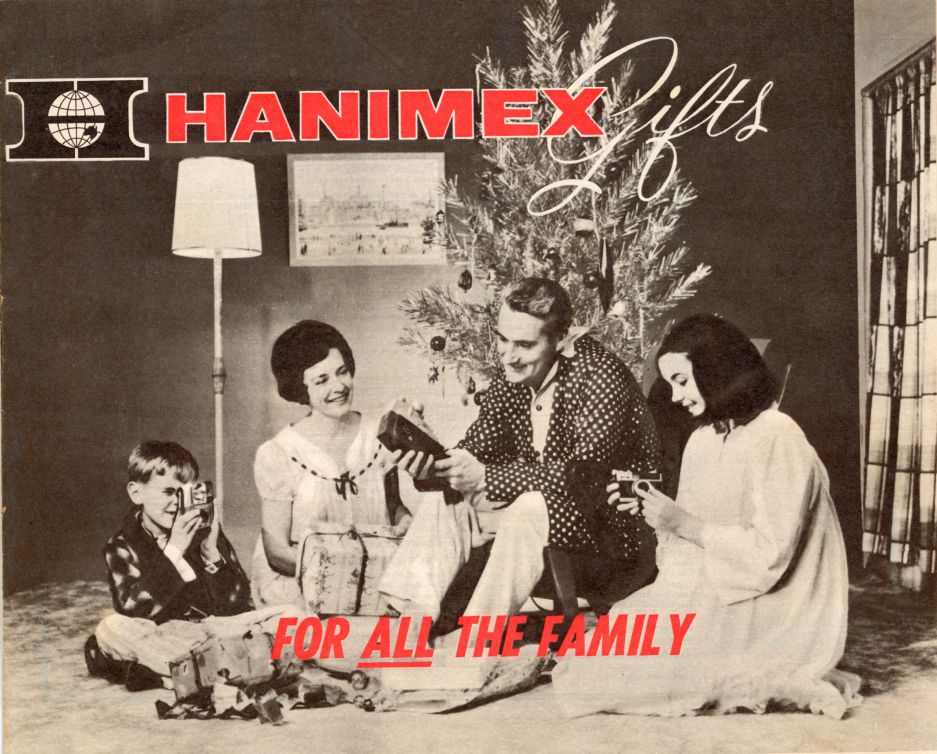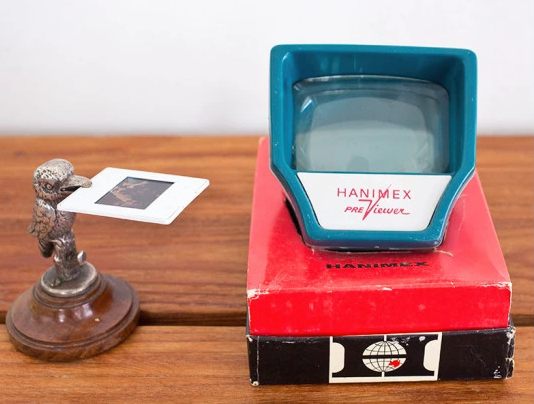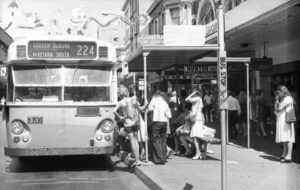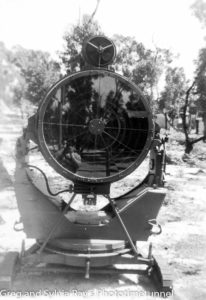There was a time when Hanimex-branded consumer goods – particularly in the photographic line – were everywhere you looked; in Australia at least. There were Hanimex cameras, projectors, slide viewers, binoculars and, quite honestly, too many other products to list.
Growing up in Australia in the 1970s I often wondered who was behind this prolific corporation, but I never followed up on the question until, a year or two before the Covid pandemic, my wife and I stayed at a bed and breakfast at Bellingen in NSW, the owner of which, Frank Wynen, told me he used to work for Hanimex. That reminded me of my earlier interest, and I set about trying to discover what I could about the company.
Frank told me that he had worked for Hanimex in a number of roles for 34 years from 1979. It was a wonderful company to work for, he said. He described working in the bicycle shop at Hanimex’s sprawling plant at Brookvale (Sydney, NSW). The shop assembled 450 bikes a day on three conveyor lines. The Hanimex bike brand was “Bennett”, and models produced included racing bikes, the then-fashionable “dragsters” and later, BMX cycles. Frank said the Brookvale complex produced a bewildering range of items, from fans and heaters to eskies. The company also had a “foam” factory near Mascot where it made swim and surf goods from polystyrene foam.
Bicycle parts were imported, then assembled at Brookvale. Spokes were joined to hubs and the company employed young women to “true” the wheels”. There was a sheet metal shop where metal parts were pressed out, a paint shop and also a plant for making moulded plastic items and parts. Hanimex had an international presence, with factories in Ireland, England and in Hong Kong.

Hannes Import Export
The driving force behind all this was Hanimex founder Jack Hannes. Hanimex, incidentally, stood for Hannes Import Export. The only time Frank remembered meeting Jack Hannes was when Frank was supervisor at the bike warehouse – a secure area that Frank had to keep secure.
“One day I saw a guy walking around in there and I told him to get out. He asked me if I knew who he was and I said I didn’t care who he was, it was a secure area and nobody was allowed in. He left,” Frank said. Later the mystery man came back and Frank discovered he was company founder Jack Hannes. “He shook my hand and told me I was doing a good job,” Frank recalled.
According to Frank, Hanimex was a very good employer. A company bus used to do the rounds of the Northern Beaches, picking up employees and bringing them to work. The main office – “the Greenhouse” – was set in a garden with a pond and on Friday afternoons all the workshop bosses went to the Greenhouse for fully catered drinks and networking sessions where all the issues of the enterprise were discussed. A company bar provided cheap drinks. Frank worked his way up to be the company’s national distribution manager and he didn’t fully sever his ties with the organisation – much altered over the years – until 2013.
Jack Dieter Hannes came to Australia at a difficult time and under difficult circumstances. Of Jewish heritage and born in Berlin, Germany, on April 12, 1923, Jack studied in England from 1934 and was 16 when his family fled the shadow of Hitler and arrived in Australian as refugees. For some first-person insights into what life was like for European refugees in Australia at that time, I recommend Emery Barcs’s book Backyard of Mars, Memoirs of the “Reffo” period in Australia. Suffice to say, “reffos” found the going tough, especially those of German background (Jewish or not) through the war years and beyond. Hannes went to Sydney University and graduated with qualifications in mechanical and electrical engineering. Later he studied economics and also developed an interest in photography.
Like the Hungarian Barcs, Hannes tried unsuccessfully to enlist in the Australian armed forces during the war. Refugees saw this as a way to convince Australian authorities of their loyalty, but at the time neither the government nor the general population was keen on the idea of “aliens” in uniform. Also like Barcs, Hannes was to note that wartime shortages created opportunities for would-be entrepreneurs to supply goods that were otherwise unavailable. Refugees suddenly found their skills and expertise valuable and could easily market clothing, shoes, perfumes and other products they were able to make in their homes and rented shops or rooms.
Something to sell
While studying postwar, Jack Hannes produced telephone note pads and imported propelling pencils, pearl necklaces and trouser braces via airmail from England, selling these items from his parents’ Bellevue Hill home. He was quoted as having said that: “In those early days after the war, the trick was not in selling, but having something to sell.” In 1947, when he was just 24, he set up Hanimex, using European connections to import Durst brand cameras and enlargers and Safilo sunglasses. According to information in his obituary in The Sydney Morning Herald, Jack’s new company turned over £25,000 in its first year, justifying an office in central Sydney.
Kodak was the main competition to Hanimex, but although it had used its market dominance to get retailers into exclusive contracts, it appears to have become complacent, so that when Hanimex arrived with fresh ideas and products it found ready acceptance. Jack got a friend, John Howie, to invest £20,000 in Hanimex as a partner, then negotiated more agencies with European firms rebuilding after the war, started importing photographic consumables and opened an office in New Zealand.
In 1954 Hannes went to Japan and signed dozens of agreements with Japanese photographic firms including Nikon and – significantly – Fujifilm. Fujifilm became one of the most important and profitable relationships Jack Hannes forged. When government import restrictions got in his way, Jack started assembling products in Australia and even had its own design staff creating new products and registering patents. In 1957 Hanimex listed on Australian stock exchanges and the rapid growth continued. In the 1960s Hanimex set up factories and offices around the world, listed on the London exchange and by the 1970s it employed more than 2000 people worldwide and was one of the world’s biggest manufacturers of projectors. Former customer and employee Andy McCourt wrote: “I was a customer of Hanimex in UK when managing photo stores and departments. We were one of the first to mass retail the made-in-Brookvale Hanorama 300 slide projector. Every slide projector came with a free Koala toy. We sold thousands of them. At GBP29.95 I think it was the best value slide projector on the market and won Jack and Hanimex a Queen’s Award for exporting. I was recruited by Hanimex and that’s how I ended up in Australia from 1975!”.

Public listing is a two-edged sword, as many businesspeople have discovered. In 1982 Jack resigned after being edged out of control of his company by then owner Burns Philp. Hanimex changed hands often and rapidly for a time after that until in 2004 it was acquired by Fujifilm.
Jack Hannes died of a heart attack in Zurich, Switzerland, on January 31, 2005.
Another article about Jack Hannes can be found here.



